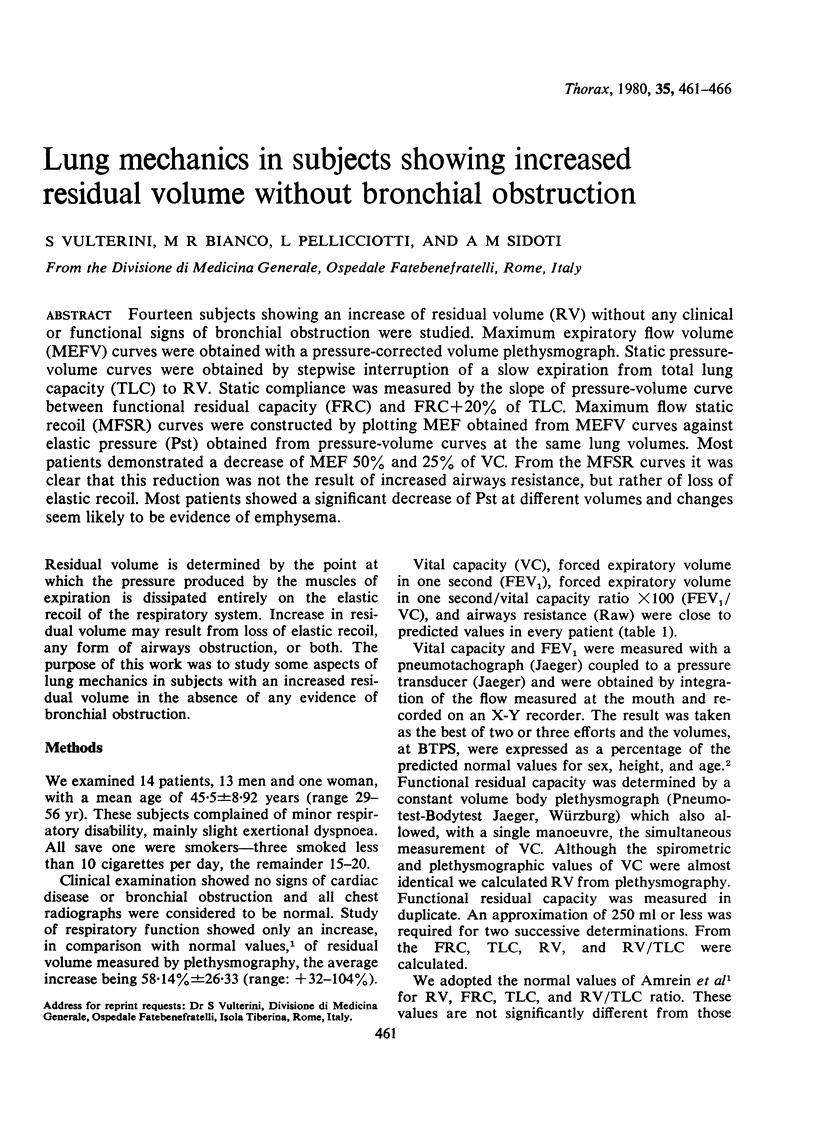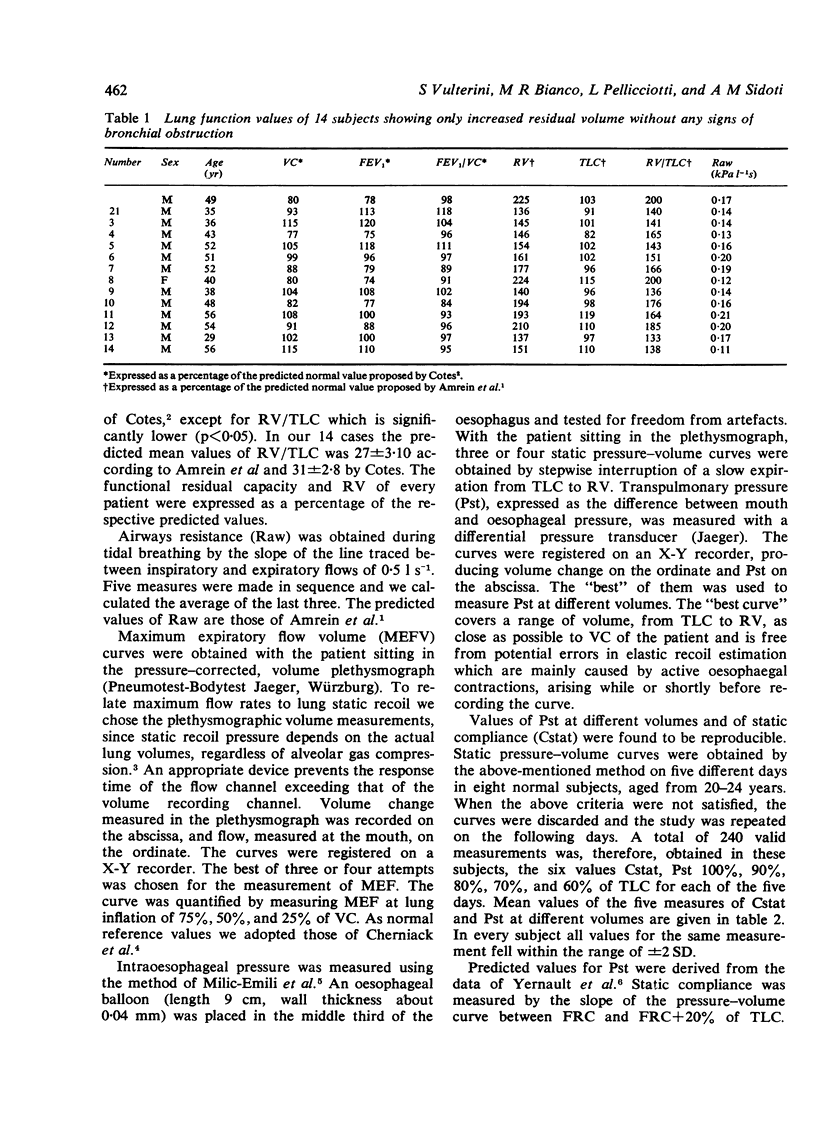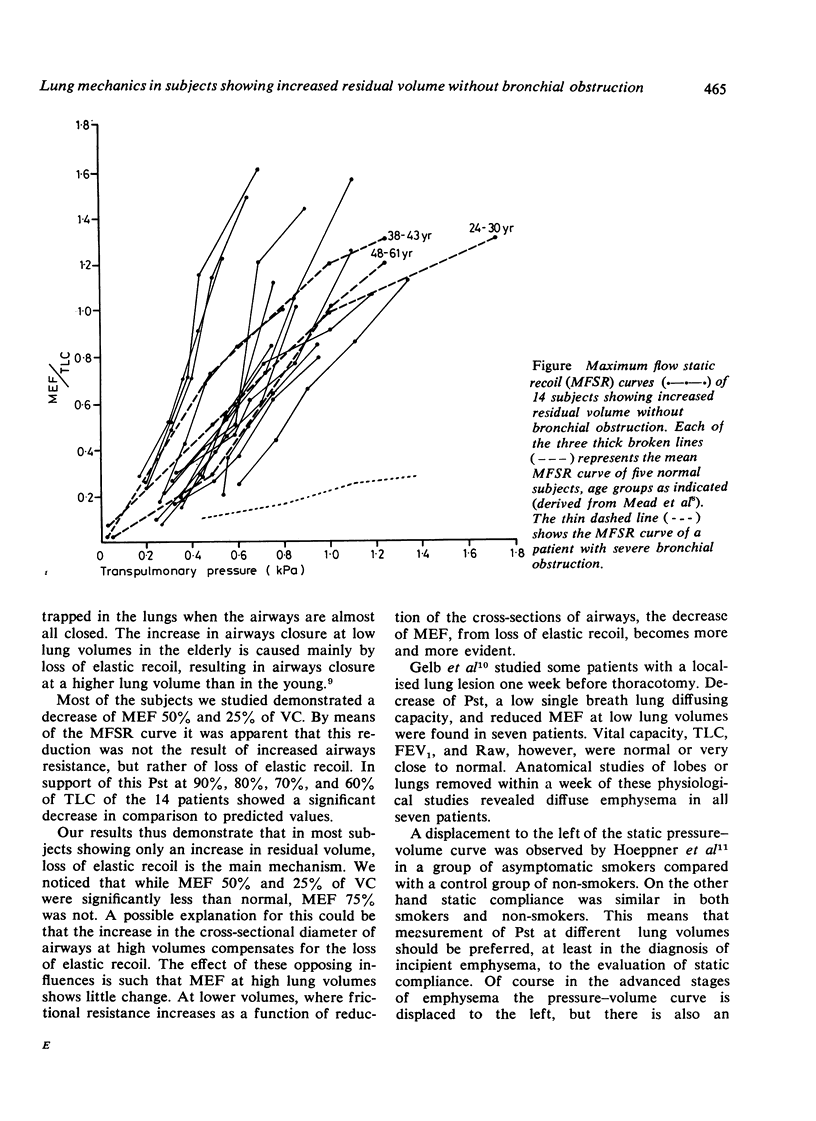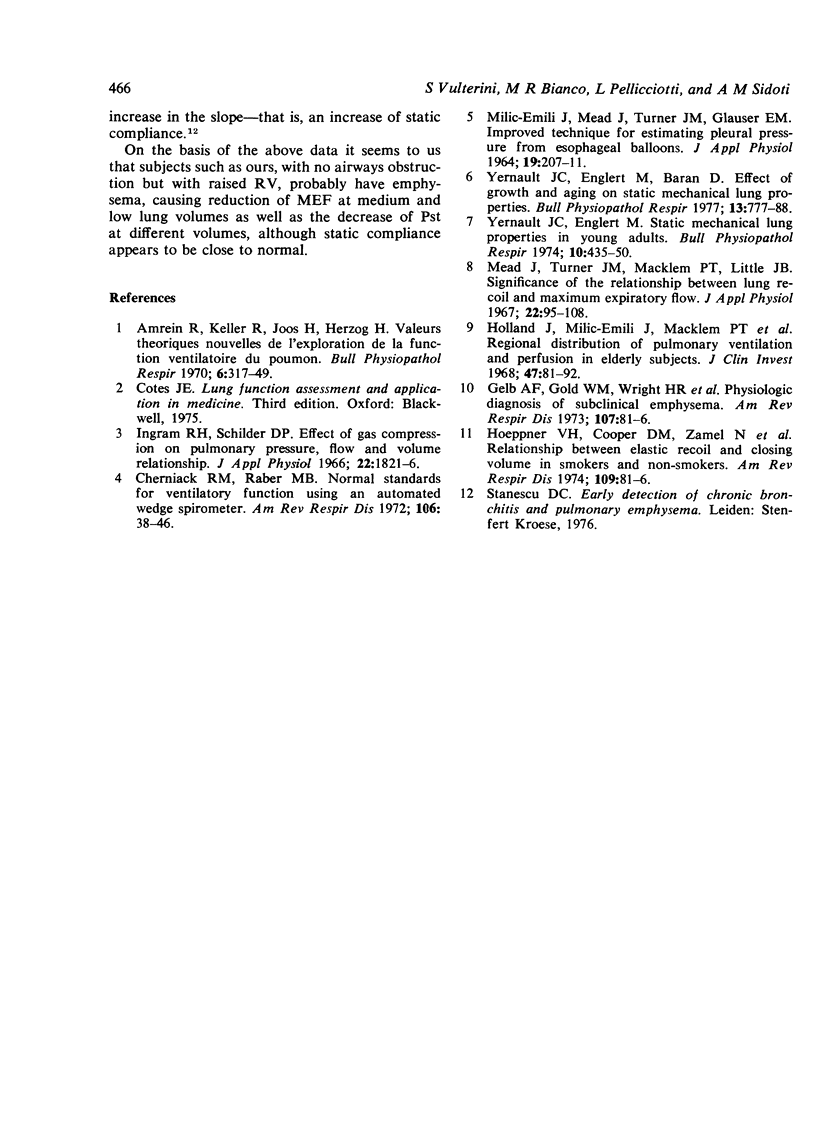Abstract
Fourteen subjects showing an increase of residual volume (RV) without any clinical or functional signs of bronchial obstruction were studied. Maximum expiratory flow volume (MEFV) curves were obtained with a pressure-corrected volume plethysmograph. Static pressure-volume curves were obtained by stepwise interruption of a slow expiration from total lung capacity (TLC) to RV. Static compliance was measured by the slope of pressure-volume curve between functional residual capacity (FRC) and FRC+20% of TLC. Maximum flow static recoil (MFSR) curves were constructed by plotting MEF obtained from MEFV curves against elastic pressure (Pst) obtained from pressure-volume curves at the same lung volumes. Most patients demonstrated a decrease of MEF 50% and 25% of VC. From the MFSR curves it was clear that this reduction was not the result of increased airways resistance, but rather of loss of elastic recoil. Most patients showed a significant decrease of Pst at different volumes and changes seem likely to be evidence of emphysema.
Full text
PDF





Selected References
These references are in PubMed. This may not be the complete list of references from this article.
- Amrein R., Keller R., Joos H., Herzog H. Valeurs théoriques nouvelles de l'exploration de la fonction ventilatoire du poumon. Bull Physiopathol Respir (Nancy) 1970 Apr-Jun;6(2):317–349. [PubMed] [Google Scholar]
- Cherniack R. M., Raber M. B. Normal standards for ventilatory function using an automated wedge spirometer. Am Rev Respir Dis. 1972 Jul;106(1):38–46. doi: 10.1164/arrd.1972.106.1.38. [DOI] [PubMed] [Google Scholar]
- Hoeppner V. H., Cooper D. M., Zamel N., Bryan A. C., Levison H. Relationship between elastic recoil and closing volume in smokers and nonsmokers. Am Rev Respir Dis. 1974 Jan;109(1):81–86. doi: 10.1164/arrd.1974.109.1.81. [DOI] [PubMed] [Google Scholar]
- Holland J., Milic-Emili J., Macklem P. T., Bates D. V. Regional distribution of pulmonary ventilation and perfusion in elderly subjects. J Clin Invest. 1968 Jan;47(1):81–92. doi: 10.1172/JCI105717. [DOI] [PMC free article] [PubMed] [Google Scholar]
- Ingram R. H., Jr, Schilder D. P. Effect of gas compression on pulmonary pressure, flow, and volume relationship. J Appl Physiol. 1966 Nov;21(6):1821–1826. doi: 10.1152/jappl.1966.21.6.1821. [DOI] [PubMed] [Google Scholar]
- MILIC-EMILI J., MEAD J., TURNER J. M., GLAUSER E. M. IMPROVED TECHNIQUE FOR ESTIMATING PLEURAL PRESSURE FROM ESOPHAGEAL BALLOONS. J Appl Physiol. 1964 Mar;19:207–211. doi: 10.1152/jappl.1964.19.2.207. [DOI] [PubMed] [Google Scholar]
- Mead J., Turner J. M., Macklem P. T., Little J. B. Significance of the relationship between lung recoil and maximum expiratory flow. J Appl Physiol. 1967 Jan;22(1):95–108. doi: 10.1152/jappl.1967.22.1.95. [DOI] [PubMed] [Google Scholar]
- Yernault J. C., Baran D., Englert M. Effect of growth and aging on the static mechanical lung properties. Bull Eur Physiopathol Respir. 1977 Nov-Dec;13(6):777–788. [PubMed] [Google Scholar]
- Yernault J. C., Englert M. Static mechanical lung properties in young adults. Bull Physiopathol Respir (Nancy) 1974 Jul-Aug;10(4):435–450. [PubMed] [Google Scholar]


